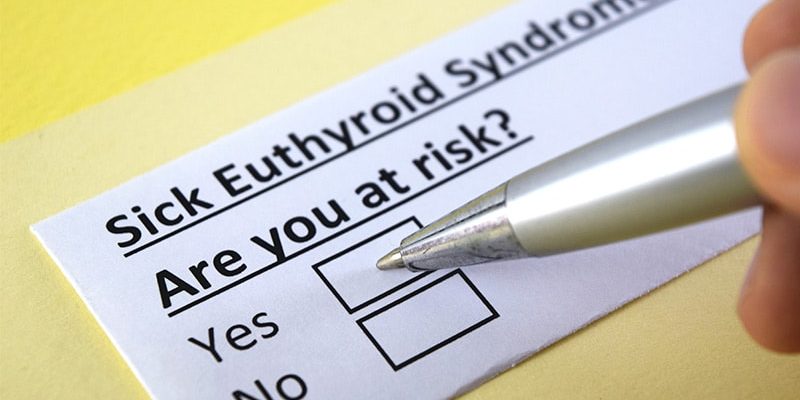Euthyroid Sick Syndrome Hits Many With Diabetic Ketosis
Researchers published the study covered in this summary on Research Square as a preprint that has not yet been peer reviewed.
Key Takeaways
-
The results showed a 58% prevalence of euthyroid sick syndrome (ESS) in 396 adults hospitalized with diabetic ketosis or diabetic ketoacidosis (DK/DKA) (91% with type 2 diabetes), in a single-center, retrospective review
-
Low albumin levels, high white blood cell counts, poor glycemic control, coinfection, and higher levels of acidosis were risk factors for ESS in the studied population.
-
The duration of hospitalization and total hospital costs were significantly higher among the patients with ESS. The ESS subgroup also had significantly higher rates of comorbidities during hospitalization, including significantly more infections and acute kidney injury.
Why This Matters
-
Findings from prior studies suggest that reduction of serum free triiodothyronine (FT3) is positively associated with DKA severity in children with type 1 diabetes, but few studies have examined thyroid status and associated verified outcomes in older patients and in those with type 2 diabetes.
-
ESS is an independent risk factor for the severity of illness and its prognosis.
-
Patients with diabetes need education about the risks from diabetic ketosis and ketoacidosis.
-
Early interventions for patients with the identified risk factors for ESS might be helpful to improve hospitalization outcomes.
Study Design
-
Retrospective analysis of laboratory and clinical data of 396 adults hospitalized with DK/DKA, with or without ESS, at a single medical center in China.
Key Results
-
Of the 229 patients with ESS, 165 had DK and 64 had DKA. The prevalence of ESS was 49% of those with type 1 diabetes, and 92% of those with type 2 diabetes, but this difference was not significant.
-
Levels of white blood cells, neutrophil absolute value, neutrophil/lymphocyte ratio, high sensitivity C-reactive protein, and creatinine were all significantly higher in patients with ESS compared with euthyroid individuals.
-
Levels of estimated glomerular filtration rate, pressure of carbon dioxide, bicarbonate ion, carbon dioxide combining power, FT3, FT4, FT3/FT4 ratio, total cholesterol, low-density lipoprotein cholesterol (LDL), and high-density lipoprotein cholesterol (HDL) were all significantly lower in those with ESS.
-
The duration of hospitalization and hospitalization costs were significantly higher in patients with ESS compared with those who maintained a euthyroid state.
-
Comorbidities, including coinfection and acute kidney injury, were significantly more common in those with ESS.
-
After adjusting for confounders, a multiple logistic regression analysis showed that factors that significantly associated with ESS included A1c (odds ratio [OR], 1.112), pressure of carbon dioxide (OR, 0.933), albumin (OR, 0.866), white blood cell count (OR, 1.146), and co-infection (OR, 1.929).
Limitations
-
The data came from a single center and from a relatively small number of patients.
-
The retrospective design precludes drawing cause and effect inferences.
-
The study included no data from follow-up after hospitalization, including no information on the course of thyroid hormone levels following patient recovery from diabetic ketosis and ketoacidosis.
Disclosures
-
The study received no commercial funding.
-
None of the authors had disclosures.
This is a summary of a preprint research study, “The prevalence, hospitalization outcomes and risk factors of euthyroid sick syndrome in patients with diabetic ketosis/ketoacidosis,” written by researchers at the Second Affiliated Hospital of Guangzhou Medical University, Guangzhou, China on Research Square, provided to you by Medscape. The study has not yet been peer reviewed. The full text of the study can be found on researchsquare.com.
For more news, follow Medscape on Facebook, Twitter, Instagram, YouTube, and LinkedIn
Source: Read Full Article
